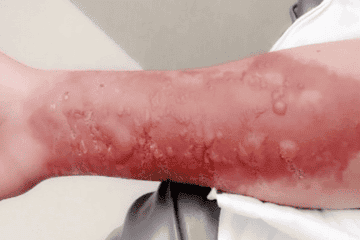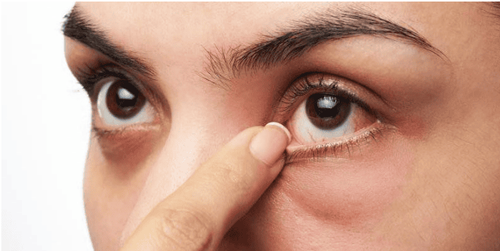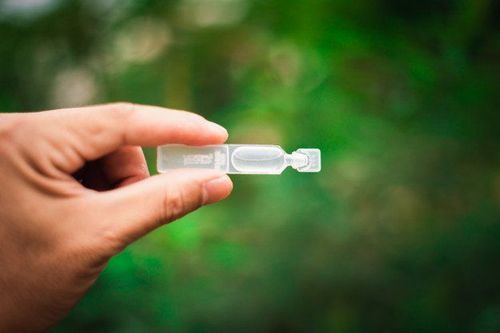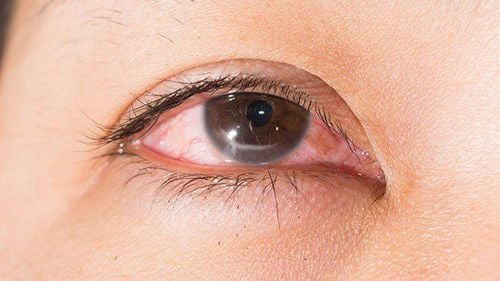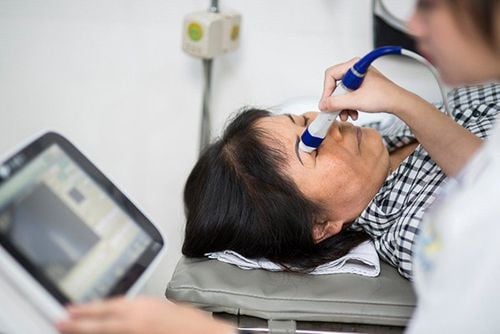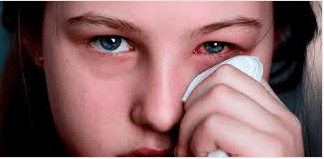This is an automatically translated article.
The article is professionally consulted by Master, Doctor Hoang Thanh Nga - Department of Medical Examination and Internal Medicine - Vinmec Ha Long International Hospital.Eye burns are a particularly urgent medical emergency in ophthalmology. Eye burns can be caused by many causes, but in all cases, it must be treated promptly and properly to preserve the functions of the eyes.
1. Brief about eye burn condition
Depending on the type of solution splashed into the eye, the concentration of the solution causing the burn, the area and depth of the burn, people classify eye burns from mild to severe.
Among the types of eye burns, chemical burns are the heaviest because chemicals will destroy and penetrate deep into the organization of the eye. Common chemicals are acids and bases. The prognosis of mild or severe eye burns depends on early or late management of eye burns.
Eye burns caused by dilute acids usually cause only mild and superficial injuries, but with concentrated acids, pH < 2.5 will cause corneal necrotic lesions. When acid contacts tissues and tissues, it will cause sudden necrosis, coagulate surface proteins, prevent the spread of chemicals so that acids do not penetrate deep into tissues, the prognosis can be known right after the burn.
Eye burns caused by bases are the most serious because when in contact with cells, bases break down cells, soften tissues and penetrate deeply, absorb water from cells, generate heat, and cause burns. The spread of the base is wide and deep, the effect lasts for many days, and it is difficult to predict at first. If a burn is caused by a base, you need to be cautious even if the initial injury is not very severe. The most dangerous bases are concentrated bases, the ammonium group and its compounds.
2. First aid and treatment of eye burns at the scene
The prognosis of the eye depends on the initial first aid after the burn, so the management of the eye burn is a key factor in determining the effectiveness of the treatment of the eye burn in the future.
First, it is urgent to eliminate the causative agent by rinsing the eyes with clean water. If clean water is not available, it is acceptable to use unclean water (pond, lake, field...) for washing.
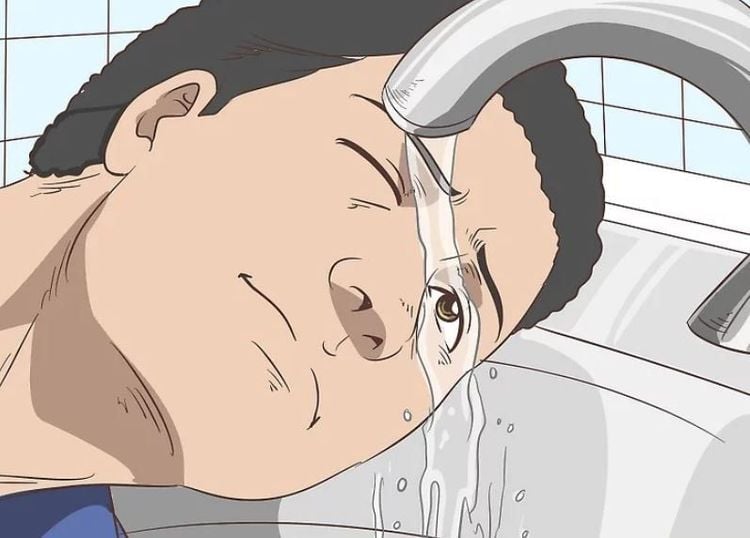
Người bị bỏng mắt cần sử dụng nước sạch để rửa mắt giúp loại trừ tác nhân gây bỏng
2.1 Effect of eyewash Remove the causative agent immediately from the eye. Reduces the concentration of the flammable substance. Inventory of injuries. Helps to limit sequelae.
2.2 How to wash eyes in case of burns Patients can wash their eyes by themselves by soaking their eyes in water and blinking repeatedly in the water so that the water covers the entire surface of the eye. In addition, people around can still help wash the patient's eyes by using a faucet, bucket, basin... and pouring water into the eye with the patient lying on his back to open his eyes, if he can't open his eyes. Then ask someone else to help you. Attention when washing eyes, the amount of water to wash must be at least a few liters and the washing time must be at least 10 to 15 minutes. And the thing to remember is not to wash your eyes with acid-base neutralizing solutions as that will only make eye damage worse. It can be said that eyewash at the accident site is a simple but very valuable eye burn treatment measure at the first stage of eye burn treatment. The effect of eyewash is to prevent burning agents from leaving the surface of the eyeball and entering the tissues inside the eye.
After timely first aid treatment, the patient should be transferred to an eye specialist for treatment. Contraindicated eye patch when transporting because it can cause skin peeling, further damage to the skin and mucous membranes around the eyes.
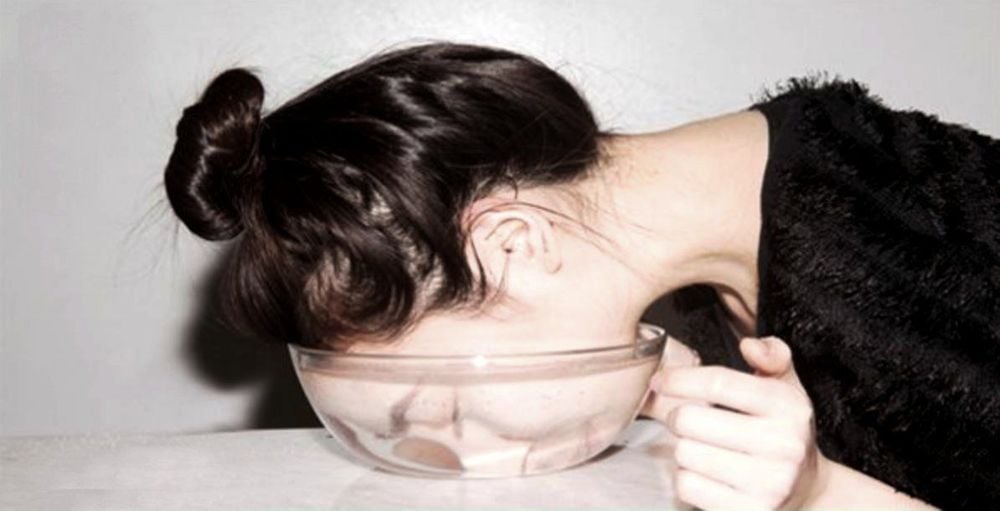
Người bị bỏng có thể ngâm mặt - mắt ngập xuống nước và liên tục chớp mắt nhiều lần
3. Treatment of eye burns at a medical facility
After giving first aid at the scene by rinsing the eyes with clean water, it is necessary to transfer the patient to the nearest medical facility for the next appropriate treatment.
3.1 Principles of treatment of eye burns Remove burning substance from the eye. Pain relief. Anti-infective (using topical and systemic antibiotics). Anti-fouling (apply ointment, no bandages). Conjunctival nutrition. 3.2 Removal of Burning Substance Apply 1% dicaine for local anesthetic. Continue to remove all foreign objects in the eye. If the burn is due to limescale, I have to use a pinwheel to remove all the limescale (shouldn't wash my eyes in the first place). The best eyewash solution is 9‰ physiological saline or sugar water (scald burns). It is necessary to check the pH before and after washing. If the patient has an eye burn from the base, it should be rinsed for more than 30 minutes until the pH returns to equilibrium (pH = 7).
3.3 Medical treatment Apply drugs: Oil chloride A, CB2 solution, antibiotic ointment, apply Atropin 1% to help fight uveitis (iritis of the eyelids). Can use autologous blood or autologous serum 0.5 - 1 ml for subconjunctival injection. Apply antibiotic ointments with a round-headed glass rod 1-2 times a day to prevent fiber from sticking to the eyes. Use pain relievers, sedatives to treat symptoms or use vitamins to strengthen the body's resistance.

Người bệnh cần dùng thuốc nhỏ mắt theo chỉ định của bác sĩ
3.4 Surgical treatment Indications for surgery need to be cautious in the early stages of eye burns, weighing the benefits and complications of surgical methods. Surgical options include:
Anterior chamber puncture: The goal is to replace chemically contaminated aqueous humor with secondary aqueous containing more antibodies. Anterior chamber puncture is often indicated in basal eye burns. Doenig surgery: In case of severe burns, the conjunctiva is heavily necrotic, it is necessary to remove the necrotic conjunctiva to the edge of the cornea and patch it with the lip mucosa or placental membrane. Passov Poliak surgery: This is a method to help eliminate toxins and toxins secreted by the necrotic tissues that remain under the conjunctiva. The surgery is performed by making 4 incisions on the conjunctiva 4 - 5 mm long, spokes, separating the layer between the conjunctiva and the sclera and leaving the conjunctiva without suturing. Corneal transplant: This is a modern method, increasingly widely applied in the treatment of severe eye burns. Corneal transplantation includes penetrating corneal transplant, superficial corneal transplant.
Some other methods are rarely used such as: eyelid surgery, eyelid surgery, Tenon coating surgery, eye pressure lowering, Sapejko surgery, eyelid surgery. With 10 years of experience in the field of Ophthalmology, she used to work at Thai Nguyen Central Hospital and held the position of deputy head of the department and in charge of the Department of Ophthalmology at Thai Nguyen University of Medicine and Pharmacy. Master Hoang Thanh Nga has a lot of experience in the field of examination and treatment of eye diseases. Currently, is an Eye Doctor of General Internal Medicine Department of Vinmec Ha Long International General Hospital
Please dial HOTLINE for more information or register for an appointment HERE. Download MyVinmec app to make appointments faster and to manage your bookings easily.
MORE :
Beware of corneal tear/detachment Care instructions before putting in and removing glasses ORTH-K at home Can a corneal tear be replaced?




